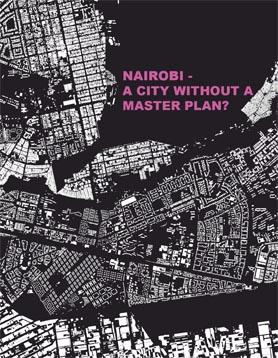Nairobi - A City Without a Masterplan?

Students: Gideon Aschwanden, Martina Vogel
Location: Group work in Nairobi
Date: December, 2007
Type: Research project, student work, the city’s vision of nairobi
A masterplan is a tool for planning the development of a city. In spite of its often bureaucratic nature, it lays down a vision, of how the city sees its own future and its potential. Where should growth and densification take place? How do residential and commercial functions negotiate their different needs and requirements? Do the city’s recreational areas and green zones connect into a continuous band, or form pockets of ‘urban nature’ within a built-up environment? These are some of the questions that are addressed by a masterplan.
The last masterplan for the city of Nairobi was set up 1970, a few years after independence. Since then, no revision has been issued. Given the fact that masterplans are stated to have a validity of 20 to 30 years, the city has been without a legal masterplan, since the beginning of the decade. In spite of this, planning is obviously still going on; and the city administration still follows a specific idea of urban development. This process is partly excercised with reference to the old masterplan, partly on the basis of case-by-case negotiations, and partly on the level of daily needs. The ‘fluid’ or laissez-faire nature of the masterplan has direct implications on the process how architectural proposals and constructions are approved and realized. In 1993 an attempt was made to formulate a masterplan, focusingalso on environmenal and ecological issues, but was never successfully completed.
Download the Book PDF

